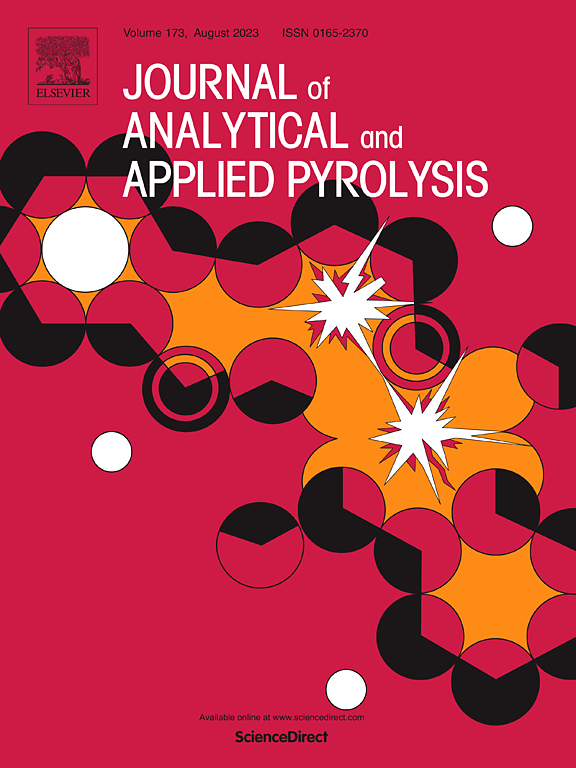Modification of highly acid ZSM-5 composed of nanocrystal stacks for reforming of lignite pyrolysis volatiles to light aromatics
IF 5.8
2区 化学
Q1 CHEMISTRY, ANALYTICAL
引用次数: 0
Abstract
The catalytic conversion of pyrolytic volatile matter from lignite represents an effective strategy for the high-value utilization of low-rank coal. Highly acidic (Si/Al = 11) ZSM-5 zeolites consisting of nanocrystalline stacks were synthesized in a controlled manner and treated with ZSM-5 using an ethanol-triethylamine-water buffer solution system, and the acidity and structure of the zeolites were modulated by varying the treatment time. The series catalysts were employed in the conversion of lignite pyrolysis volatiles to light aromatics (LAs). The pore size of the highly acidic ZSM-5 zeolite was increased by the treatment of the slow-release solution, the strong acid content was reduced and the medium and weak acid content was increased. This one-step modification combines the processes of pore size enlargement and acid center optimization, thus reducing the rate of catalyst deactivation and increasing light aromatic yields. HZ-168 (treated with an alkaline solution for 168 h) gave LAs yielded up to 27.1 mg/g, characterized by the highest amount of B/L acid, the largest pore volume and mesoporous surface area. Furthermore, the activity remained stable after five cycles, indicating the potential for sustained performance. The increase in the number of nanocrystalline interstitial pores and the enlargement of the average pore size promoted the mass transfer efficiency of the reactants as well as the accessibility of the catalyst acid sites with the treatment time.
改性由纳米晶体堆组成的高酸性 ZSM-5,用于将褐煤热解挥发物转化为轻芳烃
本文章由计算机程序翻译,如有差异,请以英文原文为准。
求助全文
约1分钟内获得全文
求助全文
来源期刊
CiteScore
9.10
自引率
11.70%
发文量
340
审稿时长
44 days
期刊介绍:
The Journal of Analytical and Applied Pyrolysis (JAAP) is devoted to the publication of papers dealing with innovative applications of pyrolysis processes, the characterization of products related to pyrolysis reactions, and investigations of reaction mechanism. To be considered by JAAP, a manuscript should present significant progress in these topics. The novelty must be satisfactorily argued in the cover letter. A manuscript with a cover letter to the editor not addressing the novelty is likely to be rejected without review.

 求助内容:
求助内容: 应助结果提醒方式:
应助结果提醒方式:


